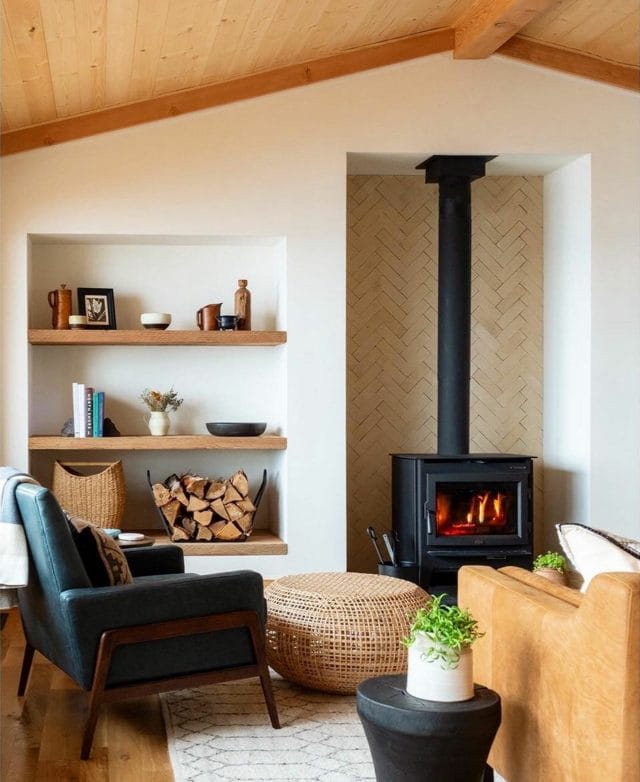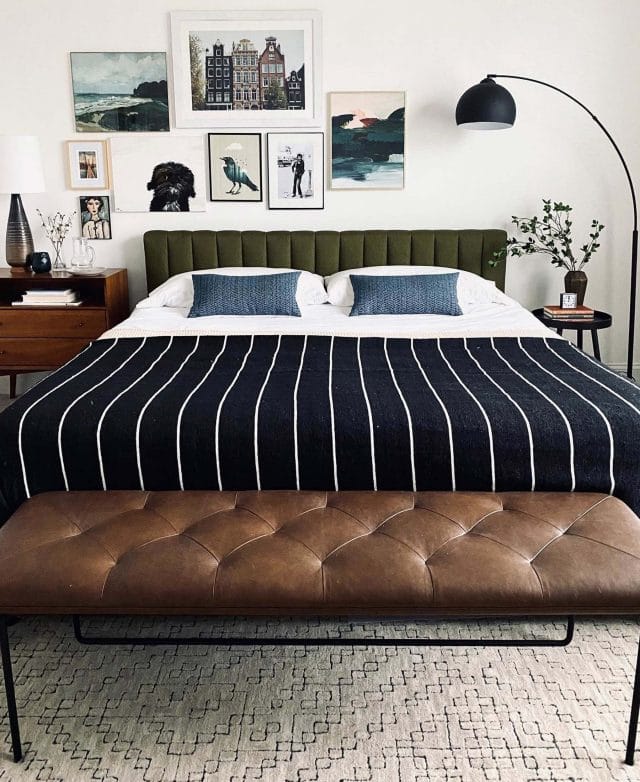Decorating with Natural Tones & Modern Design
When you think of natural tones and interior design, you might envision a boring, builder’s-beige home out in the middle of a cookie-cutter suburb. All of the houses look the same, and you can’t find a drop of character in sight. Yawn.
The reality is, that when done right, a color palette inspired by nature can be all sorts of enticing. Not only that, but there are real psychological benefits to inviting natural tones and textures into your space.
So, how can you create a space with natural tones that isn’t boring? We’ve put together this guide so you can live out your neutral-home dreams.

What are “natural tones?”
While technically almost every shade under the rainbow can be found in nature, “natural tones” in the world of modern interior design & decor primarily refer to neutral hues and minimally-treated natural materials like woods, rattans, leathers, and wools.
Black, white, ivory, beige, grey, brown, ochre, and rust are all shades that can be layered and mixed without much risk of clashing or a design faux pas. Due to this flexibility and versatility of these colors, there’s little chance that these shades will go out of style or feel dated anytime soon.
As Denise Turner, color expert, owner of the consultant business called Color Turners, and member of the Color Marketing Group Board of Directors explains “Neutrals continue to flourish, as companions for brighter hues or as standalone, monochromatic color schemes.”

The benefits of natural tones
Although often overlooked in favour of bright pops of color, neutrals and natural tones deserve their moment in the spotlight, too. Here are some of the key benefits of decorating with natural tones:
- Easy to mix and match: While you might have had to bring a sample of your modern sofa’s fabric to the paint store in the past, there’s little chance of choosing clashing colors when you deal with neutrals. That Gabriola Ivory Lounge Chair will match those gray walls, and any natural materials like rattan and light oak will fit in without standing out.
- Longevity: That gray sofa you invest in this year is unlikely to go out of style anytime soon. You can buy it today and feel confident that your choice will continue to look modern and up-to-date for years to come. When you have a neutral backdrop such as this, you can switch up your throw pillows and accessories when you need a change — without having to replace the modern sofa you’ve already fallen in love with.
- Uncluttered: Even if you fill your space with tons of oversized furniture, accessories, and artwork, natural tones will keep it from looking and feeling cluttered. When you design a room with a neutral palette, your eye is able to take in the space without being distracted and overwhelmed with countless focal points and visual clutter.

In addition to these general benefits of natural color schemes, each individual tone has specific positive qualities.
- White: Looking to renew and re-energize your space — or yourself? According to feng shui consultant and wellbeing coach Alexandra Lees, white is the perfect choice. “In feng shui, white is an energy reviver”, she explains. “In the home, it is a useful “cure” for troubleshooting in small and dingy areas where stagnant energy accumulates. Its restoring qualities can help support your goals, symbolising starting over and unbridled creativity.”
- Black: Want to add mystery, sophistication, or a feeling of luxury to your space? Add a touch of black to ground your design. As color expert Kate Smith explains, “Black is a definite color that represents authority.” When you use black in a space, you aren’t afraid of making a bit of a statement.
- Beige: As well-being coach and feng shui consultant Alex Lees says, “Beige is perfect for a turbulent period in one’s life, to introduce calmness and certainty.” If you’re looking to add stability and a nourishing energy to your space, beige is the way to go.
- Gray: Instead of being cold or depressing, gray is considered calming and the color of intellect and elegance. “Gray is the perfect neutral, as it can moderate brighter hues and pull a color scheme together,” Kate Smith explains.
- Brown: As Jeannie Matteucci of HGTV says, “If you want a color that encourages your family and friends to slow down and relax, brown can be the solution to your problem.” Kids skipping your nightly family dinners? Try adding shades of brown (including with natural woods) to your space.

How to add interest to neutral spaces
Instead of that drab monotonous shade of beige you might be picturing, we’re here to show you that a natural-toned space can be all sorts of spectacular.
Texture, texture, read all about it
As explained in our recent blog post, humans have an inherent, biological affinity towards anything related to nature and its processes. Not only are we attracted to the soothing colors found in nature, but to materials that connect us to the outdoors.
With that in mind, layering organic materials and textures is the easiest way to add interest and keep your neutral space from looking boring. Natural materials in their original shades (or nature-inspired shades) like woods, leathers, wools, linen-look fabrics, and rattan add texture and visual interest to a space — without overwhelming the eye.
Add a wool poof like the Hira to your neutral living room for luscious texture, mix a rattan chair like the Clea with a leather sofa like the Burrard, or drape a sheepskin throw like the Lanna over your gray Mea Sofa. When it comes to a neutral space, these layered natural tones and materials work in harmony to create warmth and interest.

Warm hues vs. cool tones
Although it’s true that 99% of natural tones will work together, there’s something to keep in mind if you want to take your space to a designer level.
All shades are classified as either warm or cool, and knowing which is which can help you make better choices when it comes to creating your ideal space.
Warm natural tones, such as earthy browns, creamy ivories, deep beiges, rich terracottas, and ochre yellows add coziness and instant hominess to a space when used together.
For example, if you’re looking to create intimacy in a large open space, add a piece like the Mello Taos Sofa with its deep and rich brown leather to invite a sense of comfort and closeness. Think walnut-toned woods (like the Kirun Dining Table), leathers reminiscent of warm spices (like those of the Level Bench), and honey-colored rattans (like the Livia Lounge Chair).

In contrast to these warm natural tones, cool tones like glacial whites, icy grays, and charcoal black are great for opening up smaller spaces. While warm colors are associated with feelings of warmth and comfort, cool tones are said to bring a sense of calm and relaxation. Think a Scandinavian gray like that of the Mea Sofa, smokey charcoal like the Taiga Dresser and the quartz white of the Divan Sectional.
When designing your natural-toned space, consider the type of feeling you’re hoping to inspire. Feel free to mix and match warm and cool tones for a sense of contrast and balance, or stick to one color “temperature” palette to highlight your design goals.
See? Natural tones are anything but boring. If you’re ready to invite some neutral pieces into your home, our favorite pieces can help. So long, builder’s beige.

